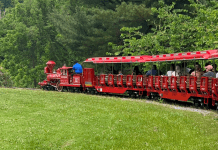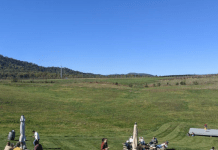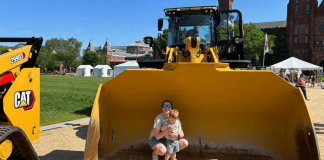If you have budding scientists, or just dinosaur-loving kiddos, the Washington DC area is a great place to be! Of course, you can visit the museums like the free Museum of Natural History in DC and the great dinosaur exhibit at the Maryland Science Center in Baltimore (see our Summer Bucket List for more museum ideas). But also, because of the area’s geology, prehistory is all around us! You can find fossils of dinosaur bones, shark’s teeth, along with plants and aquatic life, for free, less than an hour from home. Here are two great ways to do your own fossil hunting around DC and still be home in time for dinner.
1. Shark-tooth hunting along the beach
Many of the small beaches along the Chesapeake Bay make an easy fun day trip. Some are also full of prehistoric shark teeth. Yes, if you have kids between 5 and 12, go ahead and read that aloud: PREHISTORIC SHARK TEETH!
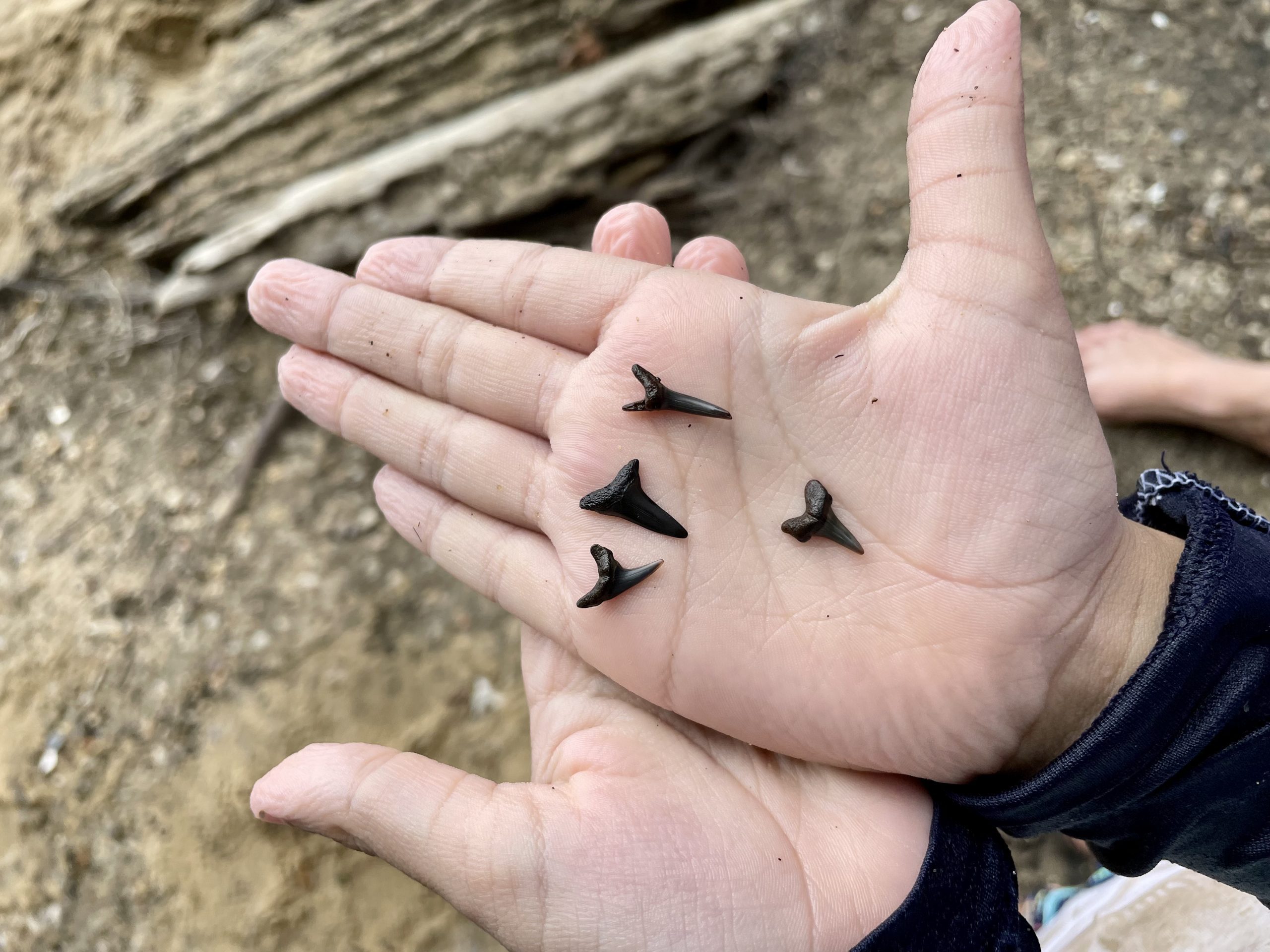
Where to go to find the best aquatic fossils
There are many places you can go to find sharks’ teeth. We visited the Nanjamoy Wildlife Management Area, thanks to recommendations form Kid Friendly DC (where you can find other great ideas for places to go). We’ve also sifted for shark’s teeth at the better-known Calvert Cliffs State Park, which has beautiful beaches, but we were able to find only one tooth there. Nanjamoy is about an hour and 15 minutes from DC. We checked the tide table to plan to go when the tide was lower—that way we’d have more beach. We parked in the designated area and hiked the beach trail to “purse park” beach. It was a wonderful place for a picnic, and we had a great day splashing around in the water. We also found eight shark teeth in an about an hour!
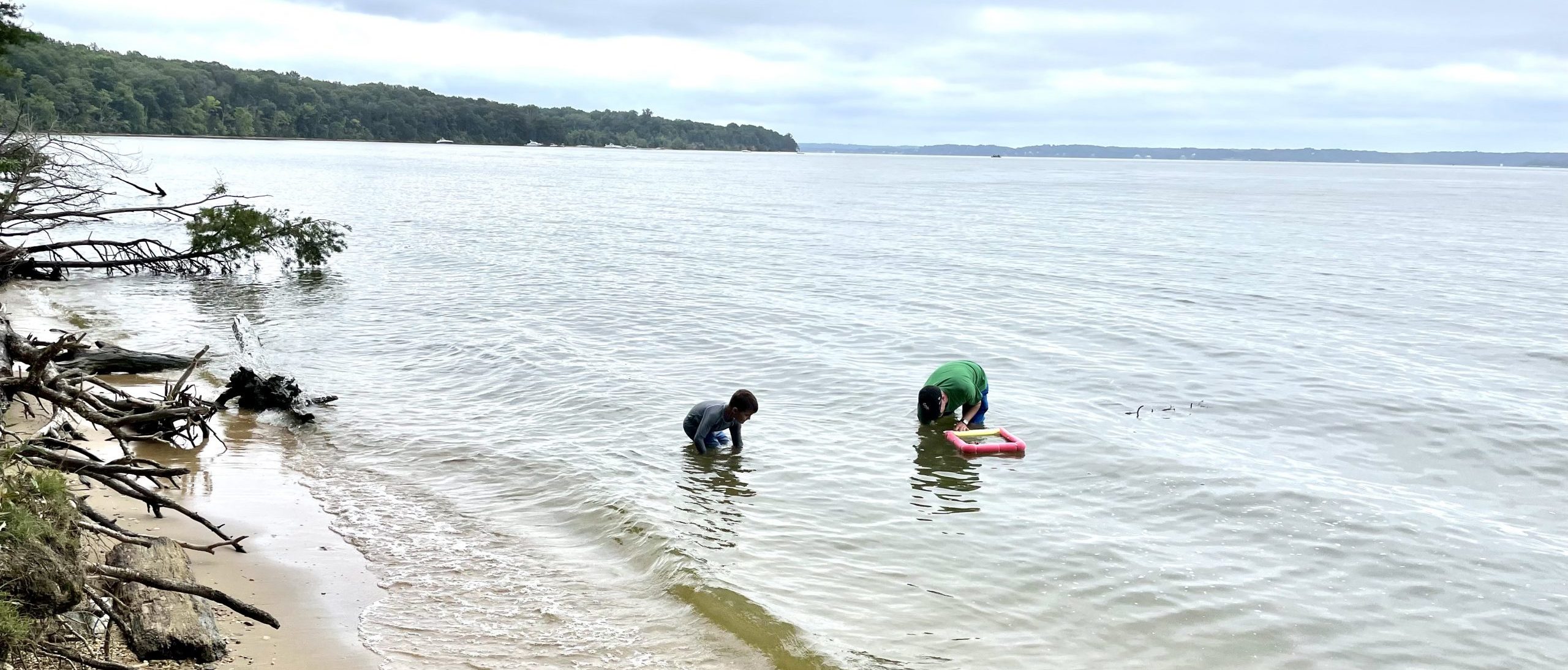
How to sift for shark’s teeth and other fossils
Finding sharks teeth is pretty easy, but it does take some digging and sifting. Kids will love getting in on the action, and older kids can do it themselves. All you need is a bucket or scooper and a sieve. You can make a floating sieve easily, or you can just pick up a metal sieve normally used for baking at a thrift store or supermarket. We made ours out of some extra PVC pipe, wire mesh, and a pool noodle following a how-to video.
Once you have a sieve, the fossil-finding is pretty simple. Wade into the water about knee deep and find an area of small broken up shells, usually a few feet in, depending on tides. Scoop some up and then sift through it—the sand will fall away and you’ll be looking through small rocks and shell pieces until you see small dark-colored shark teeth. Let us know in the comments how many you found!
2. Fossil-finding at Dinosaur Park
Laurel, Maryland has a little secret: Tucked behind some office buildings and warehouses lies a clay deposit from the Early Cretaceous Period (about 115 million years ago). It happens to be “the most productive dinosaur fossil site in the eastern United States.” Guess who gets to search for fossils there? Everyone! Yes, this little gem called Dinosaur Park is open to the public every other Saturday. Professional paleontologists oversee budding scientists of all ages as they search the grounds for fossils. The site also had a little playground with informative signs and a picnic area with tables.
 How to find dinosaur fossils
How to find dinosaur fossils
Searching for fossils is simple, as you don’t need a shovel—you can’t actually dig things up. You simply pick an area and look carefully at all of the rocks. While that may sound tedious at first, because of the nature of this site, finding fossils is extremely common. Mother Nature does the work of moving the sediment and rocks while the site is closed to visitors. So new rocks will be exposed every time you visit.
Our kids were excited to find pieces of lignite—fossilized wood—and in the first 15 minutes I picked up a rock that had trace fossils of 5 prehistoric pinecones. That rock was bagged, and like all significant fossils found at the site, sent to a lab for analysis. You may want to bring along your own magnifying glass to take a closer look at the items you find. Kids are even welcome to bring home some of the smaller (less consequential) finds. On our visit, the kids loved learning about the Maryland state dinosaur and other famous discoveries found at this site.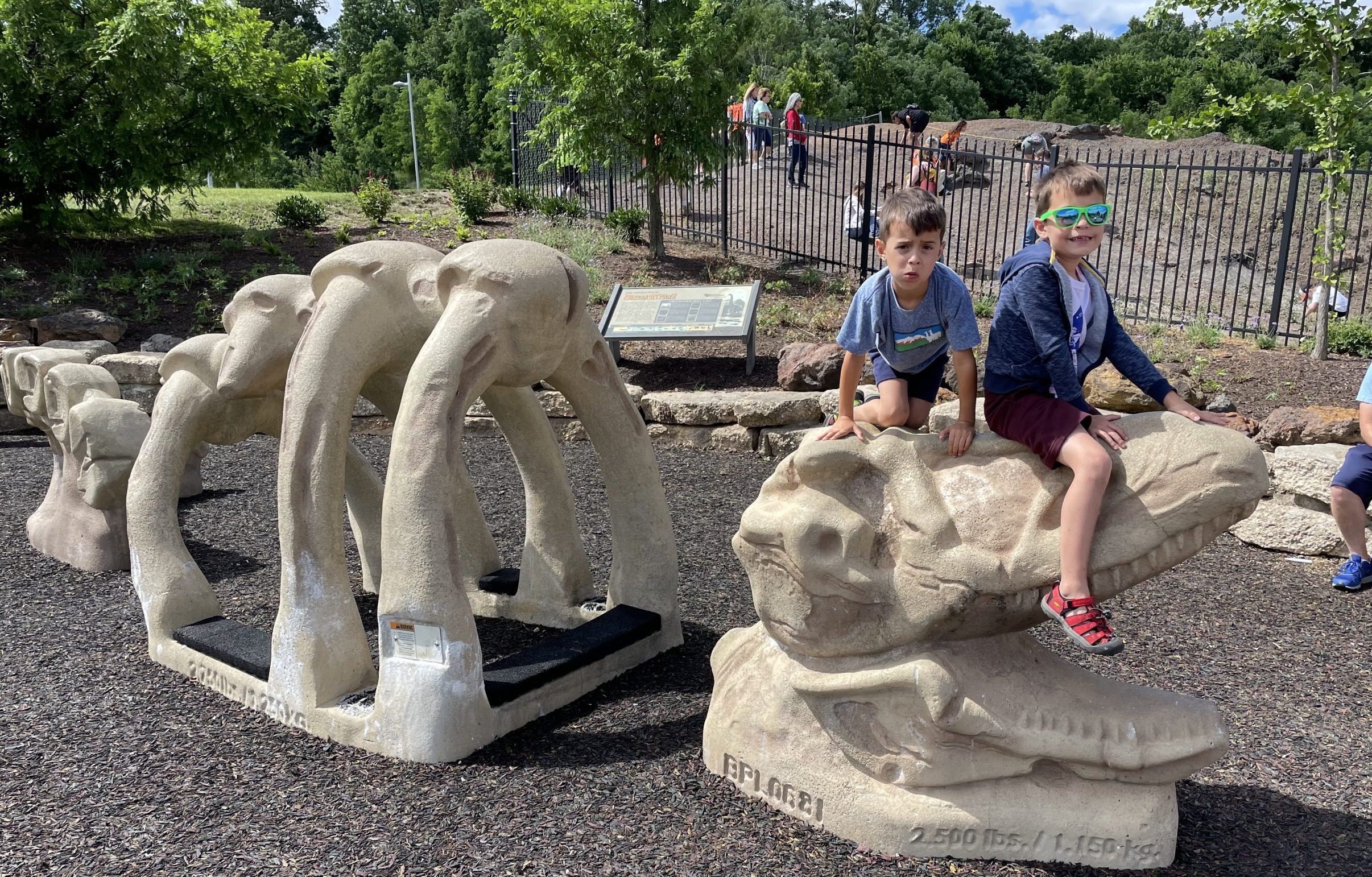
Looking for more prehistoric fossils?
If you are looking for more fossil finding along the east coast, you can check out the Fossil Guy’s website which has suggestions for other sites from New York to Florida.
If you visit any of these sites, tell us about it in the comments below. And share pictures with our Instagram @dcmoms.



